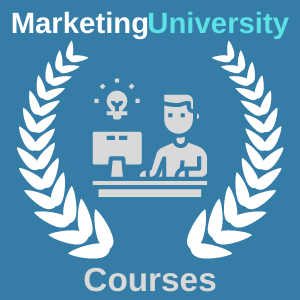Welcome to the exciting world of inbound marketing, where the landscape is constantly evolving and brimming with opportunities for growth. In this article, we will be diving into the ever-changing realm of inbound marketing and exploring how it can benefit you and your business. So fasten your seatbelt, because we’re about to embark on a journey that will transform the way you think about marketing. Are you ready to discover the power of inbound marketing? Let’s dive right in!
Inbound Marketing: A Rapidly Changing Landscape
Introduction:
In today’s digital world, marketing has become more challenging than ever before. With the constant evolution of technology and consumer behavior, marketers need to adapt quickly to stay ahead of the game. One effective marketing strategy that has gained significant traction is inbound marketing. However, the landscape of inbound marketing is rapidly changing, and marketers must stay informed about the latest trends and strategies to succeed in this dynamic environment.
SEO and Social Media: The Growing Challenge
Heading 1: The Increasing Difficulty of SEO
In the early days of digital marketing, search engine optimization (SEO) was a relatively straightforward process. Marketers could simply optimize their website with targeted keywords and rank higher on search engine result pages (SERPs). However, as search engines became smarter and more sophisticated, the rules of SEO also changed. Today, SEO requires a combination of technical expertise, content quality, user experience, and authoritative backlinks.
Heading 2: Declining Effectiveness of Some Marketing Channels
Traditional marketing channels, such as print media and television advertisements, are becoming less effective in reaching and engaging target audiences. Consumers are bombarded with advertisements every day, leading to ad fatigue and increased use of ad-blocking software. To stay relevant, marketers need to explore alternative channels and focus on delivering personalized and relevant content to their audiences.
Heading 3: The Shift in Email Marketing Effectiveness
Email marketing has long been a pillar of inbound marketing strategies. However, with the increase in spam and promotional emails, consumers have become more selective in opening and engaging with email campaigns. Marketers need to find innovative ways to capture the attention and interest of their subscribers, such as personalized and interactive email campaigns.
Heading 4: The Impact of Competitiveness on ROI
As more businesses invest in inbound marketing, the competition for audience attention has intensified. With limited organic reach, marketers are finding it challenging to achieve a positive return on investment (ROI) from their marketing efforts. To overcome this hurdle, it’s crucial for marketers to invest in conversation optimization, leveraging data and analytics to optimize customer interactions and improve conversion rates.
Heading 5: The Evolution of Inbound Marketing
Inbound marketing, once a highly effective strategy on its own, is now facing new challenges. Content marketing and SEO are no longer sufficient to drive consistent and sustainable growth. Marketers need to think beyond content creation and SEO optimization. They must adopt a holistic approach that encompasses various marketing channels and customer touchpoints.
Heading 6: The Key to Successful Marketing: Generating Positive ROI
Regardless of the marketing strategy employed, generating a positive ROI remains the ultimate goal for marketers. It’s not enough to drive traffic and generate leads; the focus should be on converting those leads into paying customers and maximizing their lifetime value. Marketers should constantly evaluate and optimize their strategies to ensure every marketing dollar spent contributes to the bottom line.
Heading 7: Leveraging Omnichannel for Success
Multichannel marketing, which involves using multiple marketing channels to reach and engage with customers, is no longer enough in today’s competitive landscape. Marketers need to adopt an omnichannel approach, which ensures seamless customer experiences across all touchpoints. By integrating channels such as social media, email, search, and mobile, marketers can deliver a consistent message and enhance customer engagement.
Heading 8: Embracing Creativity for Success
In a crowded marketplace, creativity can be the differentiating factor that sets a brand apart. Marketers should think outside the box and explore unique partnerships, collaborations, and unconventional marketing strategies. By doing so, they can capture the attention of their target audience and create memorable experiences that drive results.
Heading 9: The Rise of AI in Marketing
Artificial intelligence (AI) is transforming the marketing landscape. From predictive analytics to chatbots and personalized recommendations, AI-powered technology can improve efficiency, automate repetitive tasks, and enhance the overall customer experience. Marketers who embrace AI will have a competitive advantage in achieving better ROI and delivering personalized experiences at scale.
Heading 10: Organic Reach on Social Media
While some marketing channels are declining in effectiveness, organic reach on social media platforms such as LinkedIn, Twitter, and Shorts remains strong. Marketers should leverage these platforms to engage with their target audience and build brand awareness. By creating valuable and shareable content, marketers can tap into the power of social media to expand their reach organically.
Conclusion:
Inbound marketing is undoubtedly a rapidly changing landscape. To stay ahead of the curve, marketers must continuously adapt and evolve their strategies. By focusing on SEO, exploring alternative marketing channels, rethinking email marketing, investing in conversation optimization, adopting an omnichannel approach, embracing creativity, leveraging AI, and tapping into organic reach on social media, marketers can navigate the ever-changing landscape and achieve sustainable growth in today’s digital age.
FAQs (Frequently Asked Questions):
- How can marketers keep up with the rapid changes in inbound marketing?
- What are the challenges marketers face in implementing SEO strategies?
- Why are some marketing channels becoming less effective?
- How can marketers improve the effectiveness of their email marketing campaigns?
- What is the significance of generating a positive ROI in marketing?





